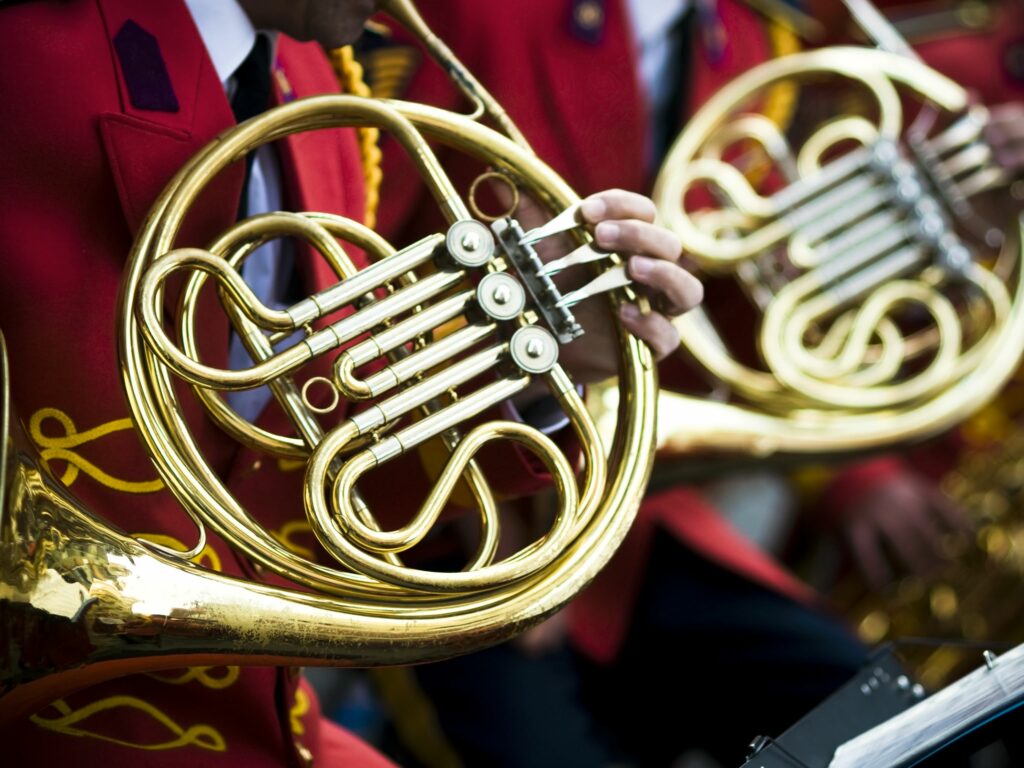- Famous Trombone Players Guide - September 5, 2022
- How to Find the Best Triple French Horns - May 30, 2022
- Best Bach Trumpet Options We Truly Stand By - May 27, 2022
If you’re looking to buy a baritone horn, you’ve come to the right place! Here at brassnwind, we’ve compiled everything you need to know to find the best baritone horn for you. Read on for more information about choosing a baritone such as where to buy and what to look for. Later on, I’ll suggest some of my top picks for a range of budgets and abilities!
What Is a Baritone?
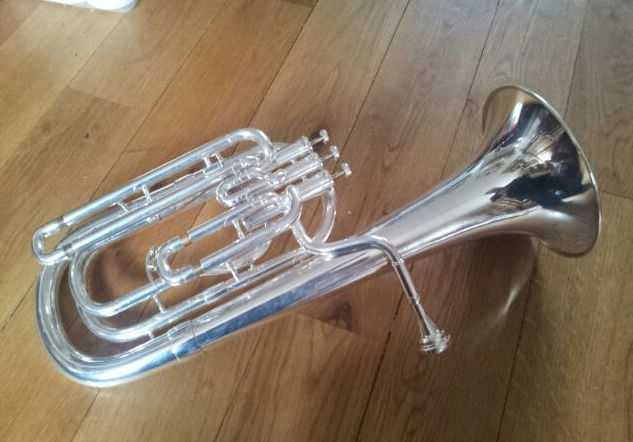
The baritone is a member of the brass instrument family that plays in an identical pitch to its cousin, the euphonium. However, while the euphonium is part of the tuba family, the baritone comes from the saxhorn family.
The difference between these comes down to the bore (width) of the tubing. The bore of a euphonium widens constantly through the whole length of the tube, while in a baritone the tubing is a more constant bore until widening at the end of the instrument.
The effect of this on the sound of the baritone is that it sounds closer to a trombone than a euphonium, with a less rounded sound. Although traditionally the baritone horn has been used as something just between the trombone and euphonium (often filling in accompanying parts), in recent years it has come more to the fore. Baritone soloists, both in the brass band world and in jazz, are now becoming much more commonplace.
Baritone horns are also used in marching bands. If this is what you’re looking for, don’t worry! We have a whole brassnwind guide to buying a marching baritone horn here.
How Much Does a Baritone Cost?
Baritones vary a lot in price! A budget student instrument can cost $350, while a professional model is likely to cost up to $6000.
There’s a lot to consider when you buy a baritone, such as which mouthpiece to get, whether you want a compensating or non-compensating instrument, and whether to buy new or second-hand. Don’t worry though, we’ve got you covered! Read on for everything you need to know about buying a baritone horn.
How to Find the Best Baritone Horn

Buying an instrument is a deeply personal thing. You’ll find that you like some instruments and can’t get on with others, while someone else might have the complete opposite opinion. It all comes down to how you play, which sounds you like, and what feels easiest for you.
For this reason, I can’t tell you which model to buy (though I have some recommendations later in the article), but I can certainly recommend how you should go about finding an instrument! This is more complex than you might think. Although you could just walk into a shop and buy the first one you see, if you want to get a quality instrument at a good price there’s more to consider.
As a side note, you’ll find some websites that compare ‘the best baritone models’ purely from the instruments available on Amazon. Be very wary of this advice, as while some of those instruments are adequate, they are often cheap imitations of more reputable brands. As such, they are likely to break or have serious intonation issues.
Setting your budget
One of the first things to consider is what budget you’re looking at for your shiny new baritone. If money’s no object, that’s great and you can skip straight ahead to find out how to test an instrument and which models might be good for you!
If you’re looking for a cheaper option, there are lots of great ways to do so, and you might even be able to borrow one for minimal costs or free of charge. Let’s take a look at how to find a good baritone on a budget.
Finding a Baritone On a Budget
If you’re looking to find a great baritone horn but you’re on a tight budget, don’t worry! Although the premium professional standards can be pricey, it’s also possible to pick up something good at a more affordable price.
One thing you might consider is approaching local brass bands. If you join a brass band (which if you’re considering taking up the instrument you’re probably thinking about anyway), they might lend you an instrument. Many bands even offer their players the use of instruments free of charge, as they know it’s a great way to get people interested in the hobby. Ask around local bands before thinking of buying your own, as you may be pleasantly surprised by what’s available!
When you first take up the baritone, it’s a good idea to use a student model instrument. Although those shiny-looking pro models might be tempting, many beginners actually find student model instruments easier to play, which will help keep you motivated through the tricky early steps of learning the instrument. We’ll take a look at some great student models in a moment.
Second-hand instruments are also a great investment, as they’re often a chance to pick up a better instrument for a price comparable to new beginner instruments. In fact, many professional musicians I know buy their instruments second-hand. The aesthetic benefits and feel-good factor of owning a brand new instrument often aren’t worth the heftier price tags!
If you decide to go down this route, there are plenty of places to find instruments. Consider asking local bands and dealers, checking instrument sale groups on social media, or online sites like eBay or Gumtree (though watch out for scams on these sites by always following the website rules). I’d generally tend to avoid the cheap instruments on Amazon, which are often inferior quality imitations of more reputable brands, and not worth the money.
If you decide to buy second-hand but you’re completely new to the instrument, you might want to be a little careful. Bring a friend who knows about instruments or your teacher to make sure that the instrument you’re buying is suitable for you and in good condition. I would never recommend buying an instrument without trying it first. If you choose to do this, you should certainly do so from a reputable music store rather than an e-commerce site.
Instrument considerations
Now you have some idea of where to find a baritone at a good price, how can you actually choose one? There are a few criteria that might make a difference, and I’m going to discuss intonation, sound, feel/look, whether it has a fourth valve, and whether it’s what’s known as a ‘compensating baritone’.
Intonation
One thing that discerns a good instrument from a bad one is its intonation. Inferior quality instruments (which are normally imitations of those made by more reputable brands) often play out of tune and may have a ‘bum note’ or two. Generally, it’s best to steer clear of instruments that don’t come from reputable makers (i.e makers that have proper online presence away from e-commerce sites) for this reason.
When you test a baritone, you can check the intonation with a tuner. Make sure you adjust the slides first to give the instrument a fair chance! If you’re not sure how to do this, ask your teacher, or check out a video guide to how to do this here.
Sound
The sound of the instrument is an aspect that’s a little less objective. Although the biggest factor in the kind of sound someone makes on an instrument is their own playing (after all, a good player will always sound good regardless of the instrument they play on), different instruments can also help or hinder you in making the sound that you want to make.
To test an instrument’s sound, try to relax and play something you enjoy without worrying too much. Bring a friend or teacher who can listen and give you honest feedback, or record yourself while you’re playing. Bear in mind that what you think it sounds like while playing doesn’t necessarily entirely match how it might sound from the back of a concert hall!
If you’re brand new to the baritone, don’t worry too much about this. As you improve, you’ll figure out what kind of sound suits you best and find an instrument to match.
Look and Feel
A couple more things that might affect a buying decision are the look and feel of the instrument. When I say feel I’m being deliberately vague, as that might be how it feels to play, to hold, or just a feeling you have about it.

Generally, how the instrument looks shouldn’t be given too much weight in the buying decision. There are some exceptions though; if you play in a band (or are likely to) then they might not like the more distinctive color of rose gold. Sometimes, bands have chosen to only use silver or brass instruments, so check in advance.
How an instrument looks can also be a great source of motivation for you to practice.
Personally, I’d put a lot more emphasis on feel; you want to have an instrument that feels natural for you to play. You should be able to hold it in a way where you are relaxed and also be able to blow through the instrument freely. It’s hard for me to tell you what you will like about an instrument, as you will get a feeling from playing it yourself!
As general advice, I’d say that as long as the instrument fits the other criteria of playing in tune with a good sound, then it’s fine to choose something based on its feeling or looking good. Never compromise intonation and sound for these aspects, though. You can always keep looking until you find something that looks and feels just right.
Why do some baritones have a fourth valve?
One big difference between types of baritones is whether they have a fourth valve or not. The fourth valve of a baritone adds an extra 2 1/2 tones worth of tubing. This has two main uses; it can be used to play other extra lower pitches and can be used as an alternative fingering to aid intonation.
Beginner instruments are often supplied without a fourth valve to cut costs, as these uses are unnecessary for a beginner player. This isn’t a problem through the early stages of playing. Even if you choose a baritone without one, the chances are you’ll upgrade your instrument as you improve and can think about getting one with a fourth valve!
Compensating baritones explained
When you look at lower brass instruments (particularly euphoniums, baritones, and tubas), you’ll find that the models split into two categories; compensating and non-compensating. This can be a little tricky to explain but basically comes down to a question of intonation.
On all brass instruments (except those without valves), each valve opens up a length of tubing when you press it, which helps lower the pitch of the instrument. However the nature of the instruments means that this is something of a compromise, and while instruments are built to be in tune on the most frequent valve combinations and in the registers they play in most, some valve combinations can be out of tune.
The 1+3 valve combination is a particularly infamous combination, which tends to be sharp as the tubing is not quite long enough. Some instruments compensate for this by adding an extra length of tubing that helps the instrument play in tune!
Therefore a compensating instrument has been adjusted to try to improve the intonation on certain valve combinations. On the baritone, this generally means compensating instruments will be easier to play in tune, but also are generally more expensive.
Hopefully, that’s a succinct explanation! If you’re after something more mathematically thorough, check out a guide to compensating low brass instruments here!
My Top Baritone Picks for 2022
So, without further ado, onto my best picks for 2022! This is by no means an exhaustive list, and especially when buying a more expensive instrument I’d recommend you try many others to be sure that you’re picking something you’ll enjoy. Even different instruments of the same brand and model can vary slightly, so try as many as you can before you buy!
I’ve split my picks into a few categories; student/beginner buys, intermediate models, and a couple of professional quality instruments.
Student Baritone Picks
If you’re new to the instrument and would rather buy something brand new, I recommend that you try these models. While a little basic, student models are generally solid and built to be less fragile than more advanced ones. This is often to accommodate the needs of children, who tend to be somewhat more inquisitive and clumsy than adult beginners! Some baritones are built with size as a consideration for the same reason.
Student instruments generally have a slightly smaller bore size than better models. This affects the sound, which won’t be as warm (and distinctively baritone-y), but also the weight (which will be lighter) and makes the instrument easier to play, as it will require less air.
Budget instruments can vary wildly in quality, so stick to reputable brands such as these if you want to buy something that won’t have intonation issues or fall apart!
Stagg WS-BH235

If you want a new instrument at the lowest price tag available, a good choice might be the Stagg WS-BH235, which can be picked up for just over $600. While you can’t expect too much from this instrument (after all, to some extent you get what you pay for), that doesn’t stop it from being a solid choice.
Pros
- Durable
- Suitable for beginners
- Low price (around $600)
Cons
- Non-compensating valve system
- Overhand tubing wrap (a slightly different aesthetic associated with beginner instruments)
- Less suitable for improving players
John Packer JP173
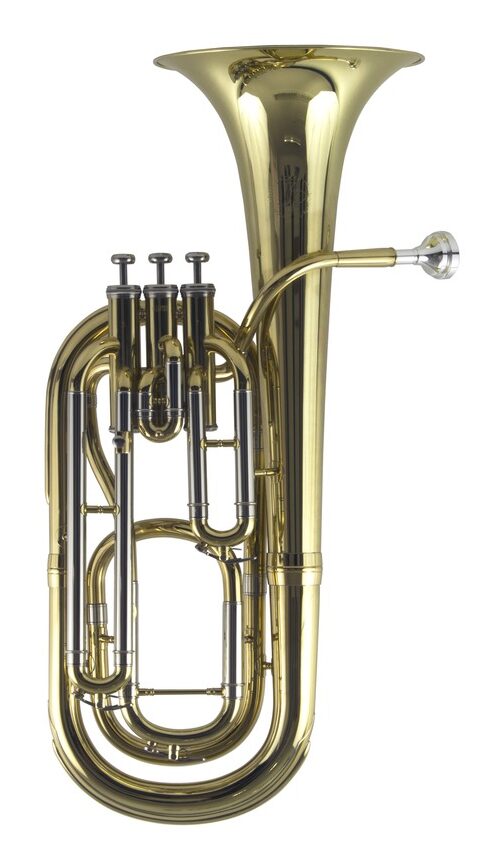
The John Packer brand is a popular maker of band instruments, as it has a reputation for consistency and durability. While the JP173 is a student model with no frills attached (it’s a non-compensating valve system and has no fourth valve), it’s a solid option for a beginner, especially for a child, as it is fairly indestructible and affordable.
Pros
- Durable
- Relatively inexpensive (around $1000 brand new)
- Suitable for absolute beginners
Cons
- Non-compensating valve system
- No fourth valve
Yamaha YBH-301

Yamaha is famously the world’s leading musical instrument/motorbike manufacturer and, while this seems an unlikely combination, they’ve built up a reputation for consistent quality instruments. The Yamaha baritone series is no exception.
Yamaha student model instruments are often similar to the higher quality models, and the baritone model is no exception. This is effectively the same instrument as the ‘intermediate’ 621 model but without a fourth valve. For the aesthetically minded, this instrument comes in several finishes, such as lacquer or silver plate. It does however come with a higher price tag than other student models.
Pros
- Durable
- Suitable for absolute beginners up to a high level
- Choice of finishes — pretty!
Cons
- Non-compensating valve system
- Much more expensive than the John Packer (at around $2500)
Intermediate Baritone Picks
Once you get past the beginner instruments, it becomes a bit unclear how to define ‘intermediate’ and ‘professional’ instruments! For the sake of simplicity, I’m counting intermediate baritones as those slightly more expensive models that don’t include extra frills such as a fourth valve or aesthetic touches like different colored finishes. Many ‘intermediate’ instruments are actually fantastic in their own right and suitable for players of all abilities!
I’ve considered two reputable models; the Yamaha 621 and the Besson Sovereign.
Yamaha 621

The Yamaha 621 is pretty much the same instrument as the 301, with the addition of a fourth valve. This is a choice for someone wanting to pick up a solid instrument with a fourth valve at a lower price point than other equivalent models.
Pros
- Price (around $4000)
- Durability
- Available in lacquer or silver finish
Cons
- Lack of compensating valve system
- Sound – arguably not as warm as other models
Besson Sovereign
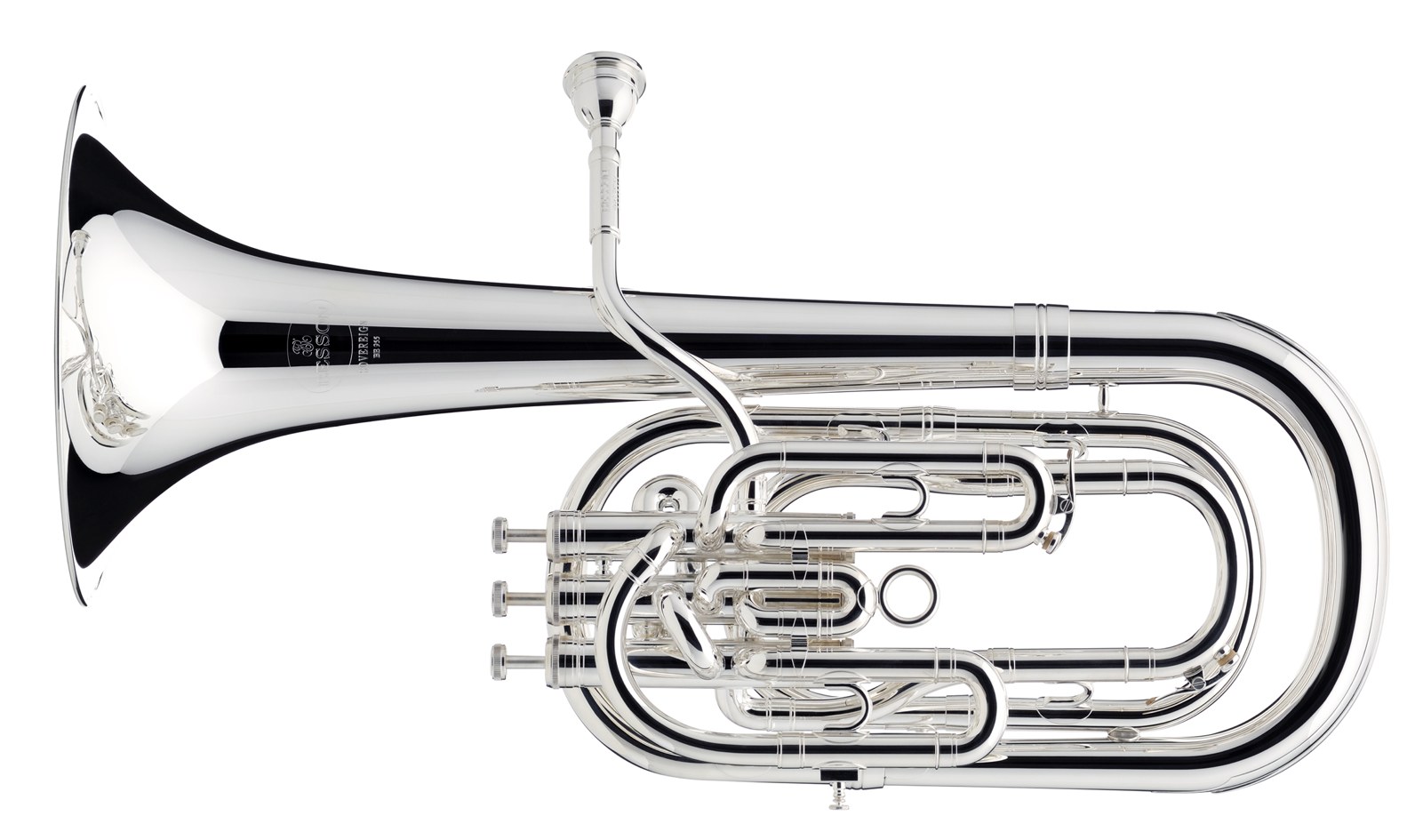
The Besson Sovereign is perhaps the most iconic make of brass band instruments, and has been a popular choice in bands for the last 60 years, if not longer. Even today, many players covet the ‘round stamp’ models made during the 1970s, which were so-called as the Besson logo at the time had an iconic round design embossed on the bell of the instruments.
If you’re able to pick up a Sovereign second hand, these are often fantastic instruments well worth the investment (although as they are handmade instruments they do vary from instrument to instrument and should be tried first). The new models are also worthy of their hype, with many players even choosing these over the more expensive Besson Prestige!
Pros
- Every instrument is professionally tested before sale
- Played by many top-level players
- 3 valve compensating system
- Strong reputation for quality
Cons
- No fourth valve
- Price tag – at just under $8000, this is the highest price of the alleged ‘intermediate models’ (although this instrument would stake a claim to be included as a professional model).
Professional Model Instruments
These instruments are the full package, aimed at the highest quality players. These are the instruments marketed as the flagship models of the brand. They normally include extras such as a fourth valve, compensating system, and a choice of color schemes!
This section of the market is far and away dominated by the Yamaha Neo and Besson models, but I’ve included some alternatives you may like to try too. After all, by the time you will be considering these instruments, you’ll probably have developed quite a specific idea of what you like, and these things ultimately come down to personal preference!
Yamaha Neo
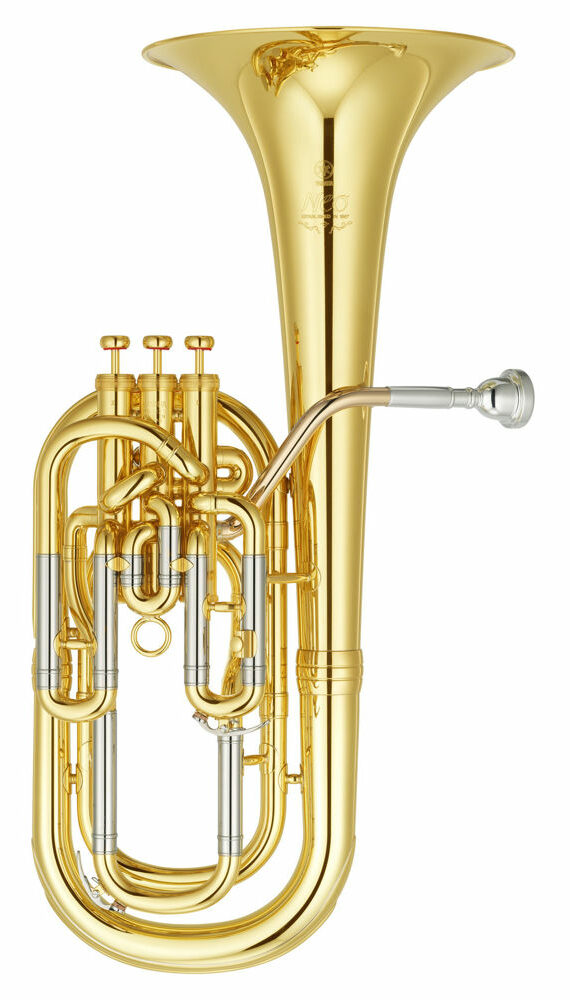
The Yamaha Neo is the premium model of the Yamaha range and was developed with baritone horn virtuoso Katrina Marzella. This instrument, renowned for its warmth of tone and projection, is a compensating 3 valve instrument.
While most ‘professional’ baritone models feature a fourth valve, Katrina felt that the extra weight of the fourth valve compromised the instrument’s sound quality too much, so with her advice, Yamaha didn’t add one.
Pros
- Warmth of sound
- Beautiful looking instrument, available in a range of colors
- Cheaper price than other flagship models (around $6500)
- Compensating 3-valve system
Cons
- No fourth valve
Besson Prestige
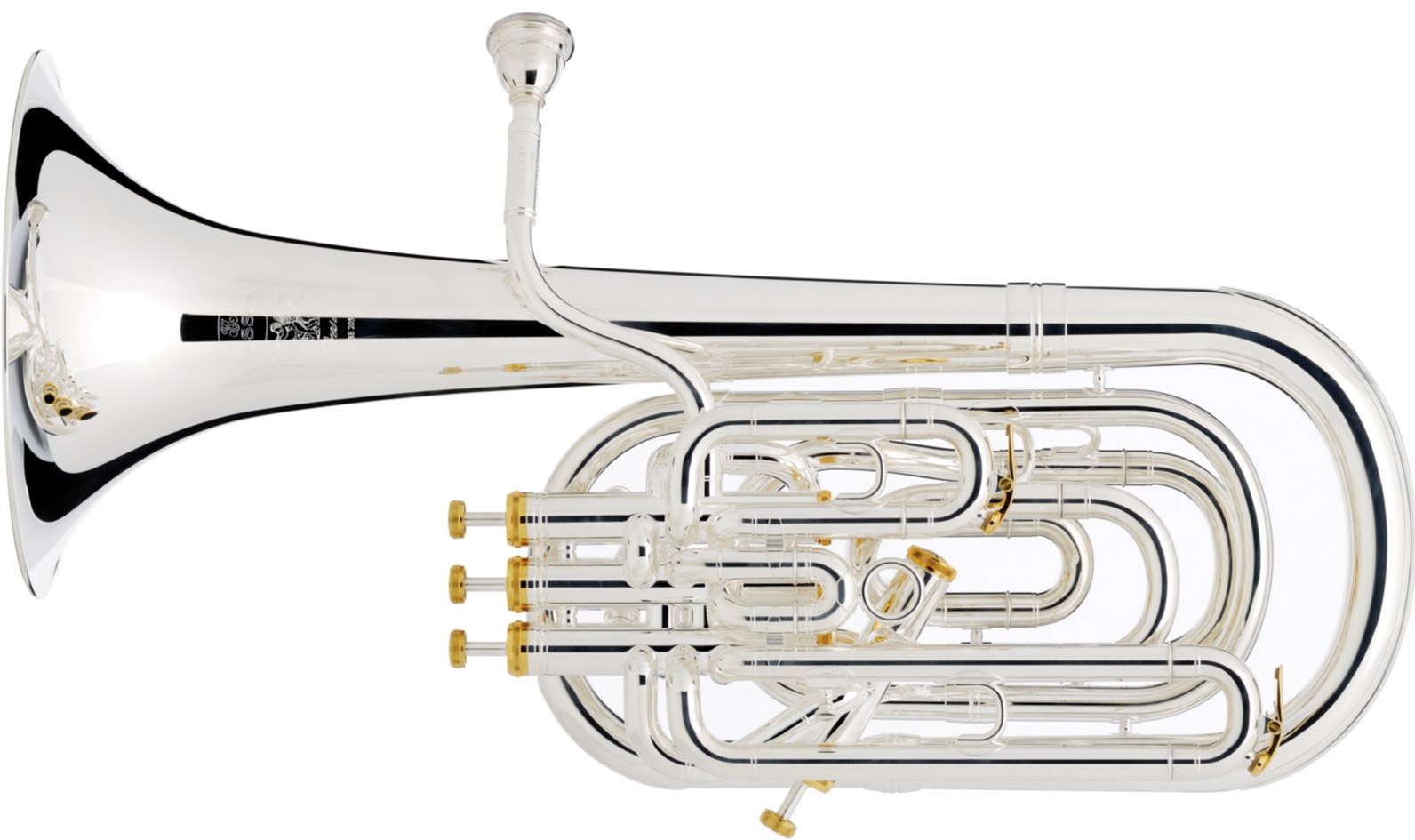
The Besson Prestige is the Besson flagship model. It has a compensating four-valve system, which allows the player a full five-octave range. It also comes in a choice of lacquer or silver plate (which has gold trim on the valves and slides for a truly fancy look).
Compared to the Besson Sovereign, this is a sl“ightly heavier instrument, which Besson claim gives it a more concentrated tone than that of the Sovereign.
Pros
- Look – if you’re after silver/gold trim, this is the instrument for you!
- Compensating four-valve system
Cons
- Price – at around $9000, this is the most expensive instrument on the list
Geneva Cardinal

With a distinctive rose brass bell, this is surely an instrument for a player who wants to stand out! Geneva instruments are manufactured in the Czech Republic and have a strong reputation for quality. This instrument is also hand engraved.
An unusual feature of this instrument is its fourth valve, which is not a true fourth valve (which would lower the pitch by two and a half tones) but a way 4to extend the main tuning slide while playing the instrument. This offers the discerning player the opportunity to correct intonation without adding the extra weight of a fourth valve.
Pros
- Tuning slide piston valve
- Unusual appearance with rose brass and engraving
- Price (around $5500, this is great value for a flagship model)
- Compensating 3 valve system
Cons
- The unusual appearance may not be to everyone’s taste
- Perhaps lacks the quality of sound of the Yamaha and Besson (though this is personal preference)
- No true fourth valve
Sterling Virtuoso
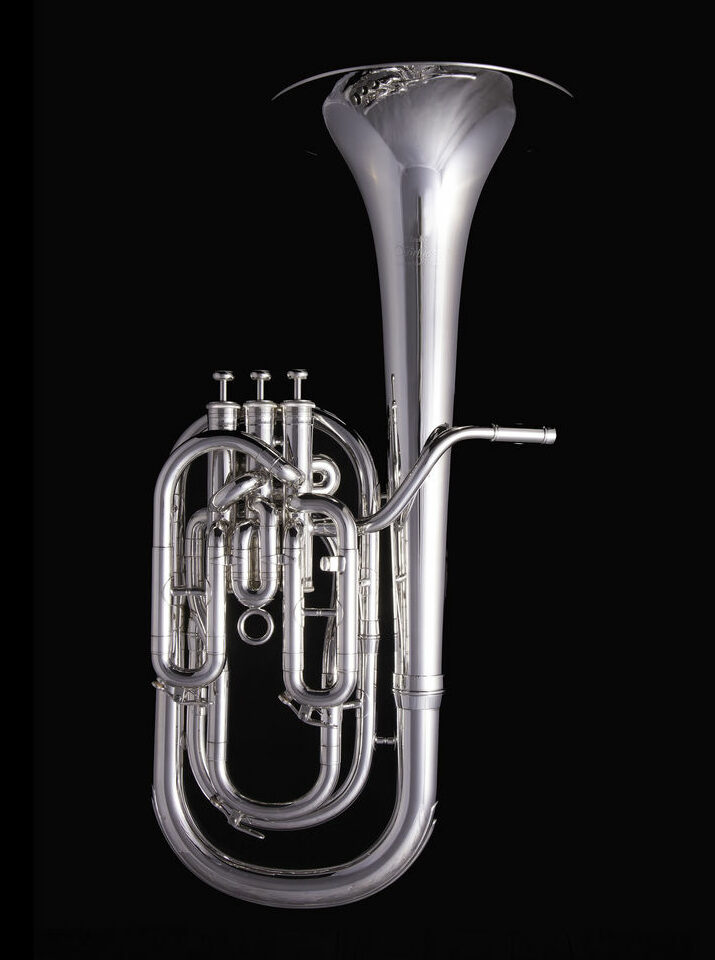
The Sterling Virtuoso is another professional-level baritone you may wish to try. With a 3 valve compensating system but no fourth valve, this is a similar instrument to the Yamaha Neo and Besson Sovereign.
This instrument has several customizable options, such as heavy bell and gold trim. If you are interested in these, you can customize this instrument to your taste by talking with your instrument dealer.
Pros
- Price (around $6000)
- 3 valve compensating system
- Customizable options
Cons
- No fourth valve
FAQs
Answer: Although the baritone and euphonium are in the same pitch (as tenor Bb brass instruments) they make different sounds, mainly because baritones have straight bores while euphoniums have conical bore. The euphonium is considered to make a wider sound, while the baritone is a warmer more direct sound closer to the trombone. Baritones and euphoniums traditionally play different roles, with baritones accompanying while euphoniums play the melody. This is partly because the smaller bore of the baritone is lighter and requires less air, so is, therefore, a more suitable beginner instrument than the euphonium. However, this is changing, and many baritone players are now in known as soloists in their own right.
Answer: While all baritones have the same length of tubing, additions such as compensating valve tubings, fourth valves, and different bore diameters mean that different instruments have different weights and widths. Generally, student instruments have slightly smaller bores so that they require less air to play and don’t have the extra fourth valve or compensating system. This also means that they generally weigh slightly less.
Answer: Like the euphonium, the baritone has a range of four octaves, which can be extended slightly with the use of a fourth valve system. Many professional-level instruments forego the fourth valve, however, preferring to prioritize sound as these extra notes are very rarely written for, if at all.


